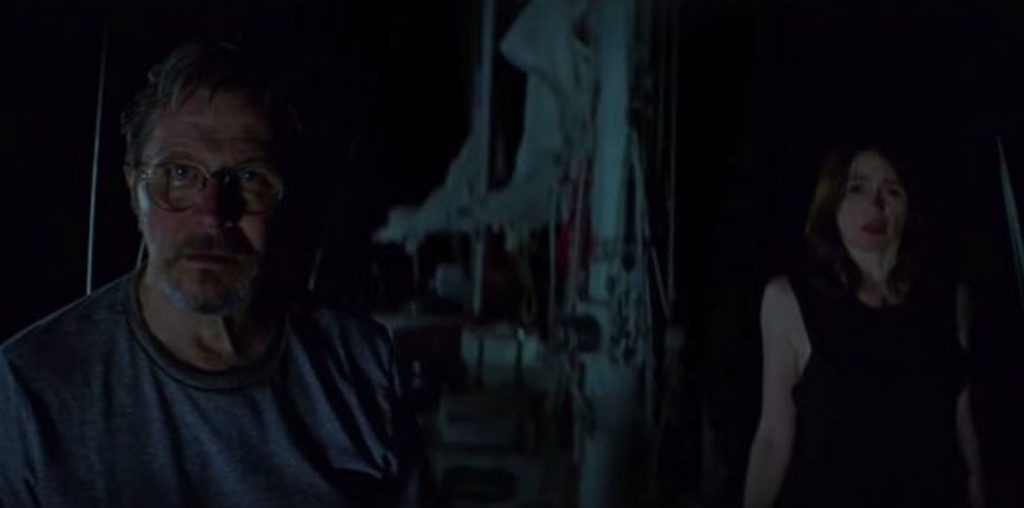
It seems like a great number of adults forget what it was like to be a teenager. Maybe it’s because they somehow got out of that period unscathed. Maybe they’re suppressing some serious trauma. Perhaps the modern clothes and music that they don’t understand distract them into thinking “I was never like THAT.”
But they were. We all were. I haven’t forgotten. And as long as films continue to accurately depict the horror show that is high school, I don’t see how I ever could. There are films that romanticize it to some degree (e.g. “The Breakfast Club”) and films that fantasize about ways to survive it (e.g. “Heathers”). And then there’s Michel Gondry’s “The We and the I,” a flawed, but still chillingly accurate illustration of that hormonal war that drafts every single one of us on our way to becoming fully realized humans.
Gondry is a singular director who clearly wants to try everything. The one connection amongst his incredibly diverse body of work is that each film is unlike any other contribution to whatever genre it falls into. “Eternal Sunshine of the Spotless Mind” was a reinvention of the romantic comedy. “Dave Chapelle’s Block Party” was a music documentary that focused more on the community that music creates than on the music itself. “The We and the I” is Gondry’s version of a John Hughes film. It’s partly scripted, partly non-fiction and wholly genuine.
It’s the last day of high school and the students enjoy a brief moment of free air before boarding a tinier version of the social prison they’ve been sentenced to for four years. The only thing that separates this city bus from a school bus is the (reluctant) presence of civilians. It’s enough to make a masturbating hobo (more prevalent on a public bus than you might think) seem quaint.
It’s not long before the scant grownup commuters, unable to ride in their preferred collective invisibility, evacuate the budding war zone. But there’s no escape for most of these kids. Not yet. They’re still trapped inside their awkward, ragingly hormonal bodies. The bus is a microcosm of their teenage social lives and it’s god-awful for every single one of them, from the lowliest nerd to the popular kids who reign over the rear seats.
For two years, Gondry worked with students at The Point, a community arts center in the South Bronx, to create these characters. Though Gondry drew up a twenty-page outline (along with Jeffrey Grimshaw and Paul Proch) to keep the narrative on track, the kids all play themselves. The final script was a collaboration of Gondry’s own recollections of youth and the true back-stories of these urban students, where there were numerous parallels. While there are certainly some striking differences between the socioeconomics of the South Bronx versus, say, a high school in France, Gondry doesn’t focus on any of that. Instead, he highlights the universality of being a teenager.
No one is safe. In the world of a teenager, there’s no such thing as personal property. Journals are snatched away, ridiculed and ripped up. Backpacks are thrown out the window. Clothes are ruined by pudding. A guitar is smashed, which is fine for the rock and roll star that can afford another, but a tragedy for a kid who probably toiled for months to buy that one. The fact that it’s the last day of school creates a more intense interaction between the students. For some, it’s the last time they will see each other and that makes them more honest and emotional. The kids turn on each other in an instant. They’re balls of Id banging together in a confined space. Not much happens, plot-wise. But somehow it’s simultaneously compelling and horrifying, like one of those abused farm animals videos that vegans like to make.
Of course, certain fabrications were necessary to achieve that level of “realness.” The actual bus ride doesn’t take nearly as long as the film’s 103-minute running time. Gondry employs his signature whimsy in flashbacks and YouTube videos that fill the audience in on the back-story. The prevalence of cell phones may date the film, but even before every teenager had one, they still managed to spread gossip like wildfire. No secret stayed secret very long.
Though the film takes place in modern day, Gondry got the idea from a memorable bus ride in 90s Paris, during which twenty or so students piled on at the same stop and exited slowly, with the dynamic changing after each departure. At that age, they’re only just learning how to be introspective and how important that skill is in interacting with others. They have to be separated from “the We” to become “the I.”
In order to survive high school, you have to either blend in, or defiantly stand out. There is no in between. It really does get better. But it’s not hard to see how escape can seem impossible. Teenagers are teenagers no matter their socioeconomic background. They’re vulnerable and cocky, selfish and casually cruel. They have yet to realize how their actions affect those around them, yet nearly everything that happens TO them, from getting invited to the right parties to sexual assault, carries the exact same (substantial) emotional weight.
The film can feel tedious when some of the less natural performers are on screen. It is also a bit repetitive at times, (especially with the use of Young M.C.’s “Bust a Move”) but that repetition also lends itself to a sort of rhythmic editing. Gondry cut his teeth on music videos after all.
Regardless of its problems, “The We and the I” is required viewing. It very well may be one of the most important films about teenagers ever made. It’s crucial that we grownups don’t forget our teenage years. If adults don’t show teenagers empathy, how are they ever going to learn it themselves?
